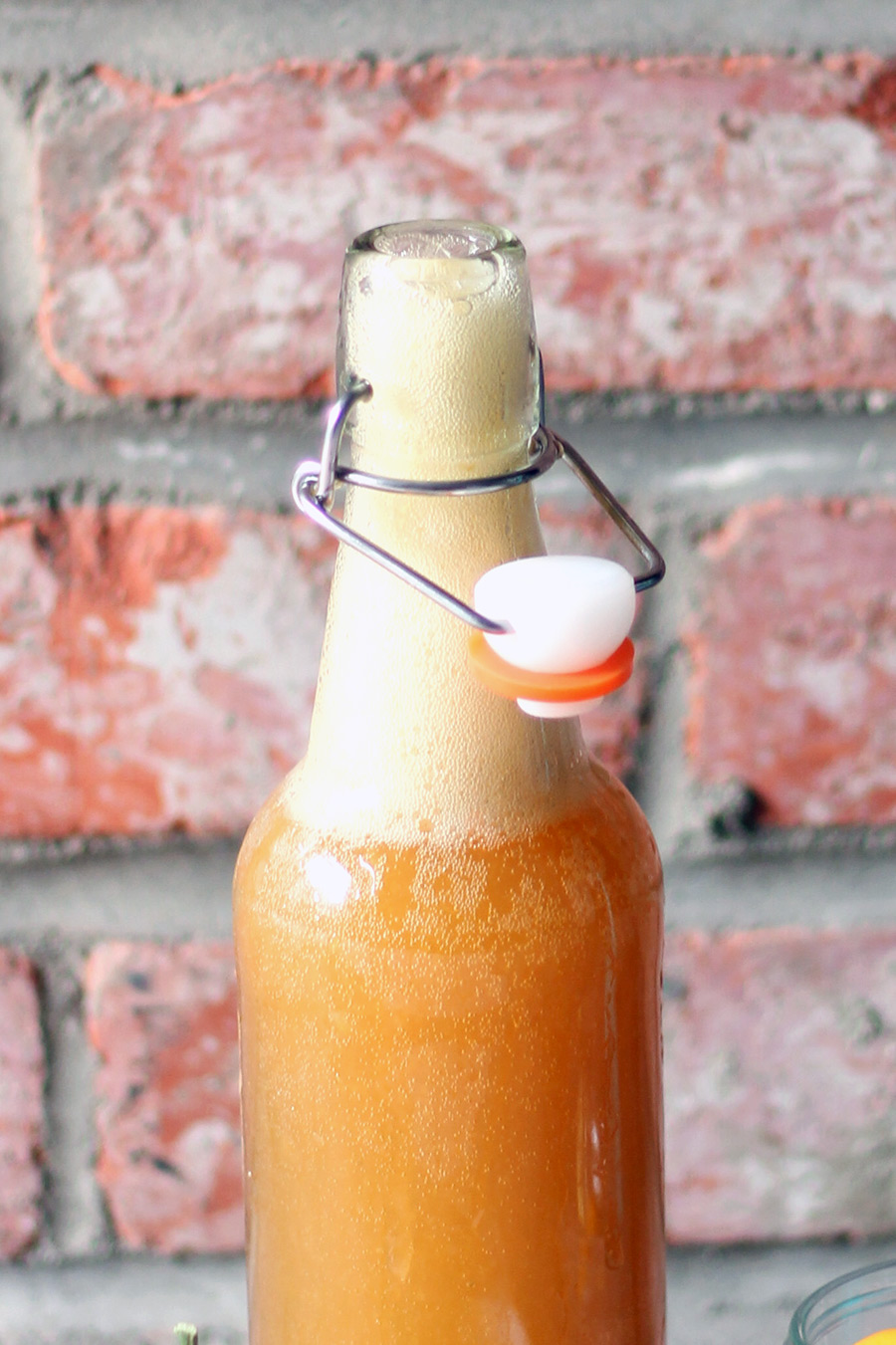
Tired of your kombucha falling flat?
So, you bottled your booch a few days ago with your favorite fruit and herb combo, (say Lemon & Thyme), but when you opened the bottle…
No hiss, no fizz… so what happened?!
There are a few factors that may have led to your fizzless booch. Here are some tips that will help you avoid flat kombucha forever.
Here are my 7 Tips For Fizzy Kombucha
Kombucha gets carbonated during secondary fermentation. Secondary fermentation is when you flavor the kombucha, bottle it, and then leave it out to ferment for longer. The bacteria get re-activated by the sugar in the flavorings and release gas. The gas is contained in the bottle and builds pressure, so when you open the bottle it will make that beautiful hiss sound.
Sugar, time, temperature and the bottles you use all play a part in getting really fizzy kombucha.
1. Flavor the kombucha with fresh juice
Fresh juice is packed with nutrients, live enzymes and natural sugar. This combo will make your kombucha explode with carbonation. Literally.
I’ve had bottles explode when I used fresh juice or fruit puree and let them ferment too long in weak bottles.
In the Summer you’ll only need 1-3 days max to get a fizzy kombucha if you use fresh pressed or squeezed juice.
2. Flavor it with a fruit puree
Similar to fresh fruit juice, fruit puree gets the probiotic bacteria in a frenzy. They eat it up like crazy, producing a very carbonated drink. I like to blend mango into a puree and then add it to my kombucha.
3. Add sugar if you want to keep it plain, or if you’re flavoring with tea, herbs or spices
If you don’t want to flavor the kombucha, but want it fizzy, add sugar to it. The bacteria need the sugar to release gas and make it carbonated. Same goes if you use flavorings that don’t have sugar in them, like tea, herbs or spices.
I go into detail on how to flavor kombucha in this post here.
4. Don’t filter out the yeast
That brown, slimy looking stuff floating around in your kombucha is yeast. The yeast contributes to fizzy kombucha so keep it in there. You can filter it out later when you’re ready to drink it.
5. Use flip-top bottles or growlers
If your kombucha isn’t getting fizzy, the bottle may be to blame. Use a strong Grolsch-Style flip-top bottle like these or a beer growler. The ones that are made well, will not explode under pressure and won’t let the gas escape either.
Mason jars don’t hold the fizz and most store bought kombucha bottles won’t either after the seal has broken.
I love beer growlers, because they are super strong, can be left out for weeks to ferment without exploding and make the fizziest kombucha I’ve ever had. I leave mine out all the time and pour myself a glass of kombucha when needed. It stays fizzy even when the bottle gets low and doesn’t take up space in my fridge.
6. Length of secondary fermentation
Sometimes it just needs more time, especially in the colder months. If you added sugar, used fresh juice and bottled it properly, but it’s still not carbonated, you just need more time.
7. Temperature
In the warm months my kombucha gets fizzy in 1-2 days, but in the colder months it can take up to a week. Warm temperatures increase the activity of the bacteria, while cold slows them down. If it’s taking too long and the days have been cold, here are my tips for making kombucha in cold weather.
Follow these 7 Tips For Fizzy Kombucha and you’ll never have flat kombucha again. If you want to get started making your own kombucha or need a new SCOBY you can get them here in our shop.
Happy Fermenting!
Danielle
Hi Danielle,
I love this post! Does it have to be a glass beer growler? Or can you use stainless steel?
No, no metal at all for anything fermented. The ferment will eat the metal.
Hi – I get heaps of fizz but not much flavour in my secondary fermentation – how does that work – it seems to taste like fizzy water. Can the secondary fermentation use up flavour somehow? Lots of the fruit in the bottle is very old but since it is still fizzing I think it is working plus the fruit doesn’t seem to pour easily out of the bottle, so I just use the same bottles over & over & just add more fruit & juice. Since it is obviously doing something and still fizzing so I think it must still be good for me.